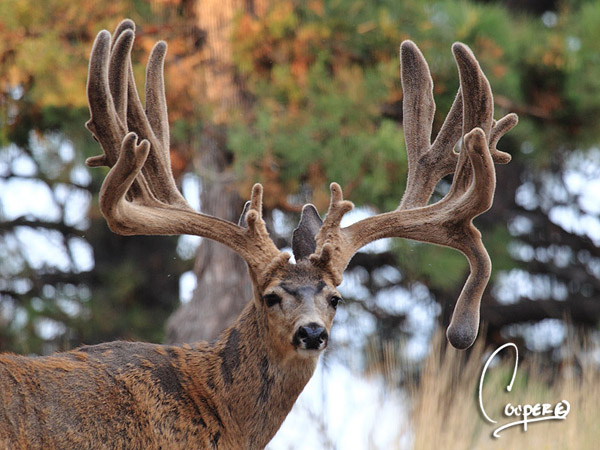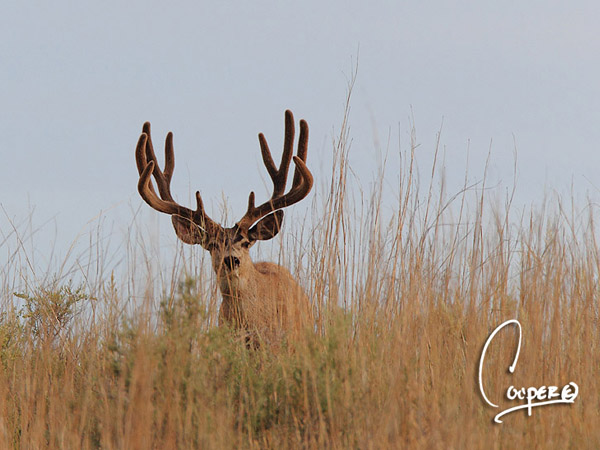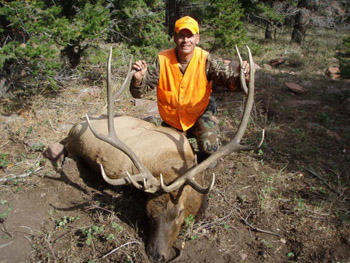By Brian Elling
There are many advantages hunters seek with a tag in their pocket during season. It may be clothing, optics, gun or any number of items. One I feel most important is scouting, a hunter could have the best possible hunting products but the animal still must be found in a limited amount of time. When time is precious; scouting during the season is not the opportune time. Scouting while you hunt is imperative but it is not when you should be learning the area for the first time. Personally, I'd rather have 10 days scouting and two days of hunting over 10 days hunting and two days scouting.
 Click Here to View Photo Tour |
Being a single dad, time is probably the most valuable item to me. It is rare for me to have so called "free time". So I maximize it, but also supplement it with family time in the woods. My girls enjoy looking for antlers in the spring and summer. Not only is a potential reward just lying in the woods waiting for them to find but the exercise, views, education and especially time with my kids is awesome! To my girls we are aimlessly walking around, I however have areas I want to learn, animals to monitor, game cameras to check etc… It is a fun time for all of us, granted going on days with perfect weather is best at ensuring kids have a good time and are comfortable.
On the days I am kid free, scouting gets kicked up a few notches. Instead of a leisurely stroll for a mile or two, most likely a long hard hike into some remote country is on the list. I use these days to learn new areas, search for hidden honey holes and animals. I am up early and back late just as if I was hunting. On these trips my GPS is a necessity, it is near impossible to remember everything you come across so I am constantly entering points for later evaluation at home. I enter rub lines, bedding areas, wallows, water sources, trails (game & human), meadows not marked on maps, glassing points, and basically anything that will help me understand how, when, where and why the species I am after move throughout the area. I also carry a paper map with me for two reasons; first is if my GPS fails, second it is easier for me to view the "big picture" on terrain in the area when using a map. The GPS screens are so small it is hard to view large areas with any reasonable detail. Arriving home, I place the marks and what they are on a mapping program on my computer. It allows me to visually see all the information and further analyze what areas will likely be used and when by the animals.
 Click Here to View Photo Tour |
Hunting a unit for the first time can seem rather daunting at first thought, especially if you have been applying for many years to acquire the tag. I like to take scouting in steps in a situation like this. If you live close by, multiple single day trips can be utilized or mini-vacations will be needed for proper scouting if distance is an issue.
A great example is in 2007 when I drew a Utah LE elk tag, I never stepped foot in the unit until that summer. I spent six, three day weekends leading up to the start of my early rifle season learning the unit. Should have had the #1 bull on my hit list but some confusion during a lighting storm resulted in filling my tag with a nice representative bull of the unit. He is unique in having three separate antlers so he turned out to be a great trophy.
 |
An added benefit of scouting is the exercise you will receive; granted it won't be enough alone to keep you in shape but it's a nice benchmark to judge your current efforts against in determining if your intensity needs to be increased or maintained.
Simply don't get over whelmed with learning a new unit, take it in little steps and start early, if it is a unit to be hunted multiple times your knowledge will get more refined and precise as the years go by.
Click-a-Pic ... Details & Bigger Photos
Click-a-Pic ... Details & Bigger Photos
Hunts & Tags | Hunt Draw Odds | About Mule Deer | About Elk
Store | Classified Ads | Photo Tours | About this Site | Advertising |
Older Content | Email Us | Privacy Policy | Links | Podcasts
